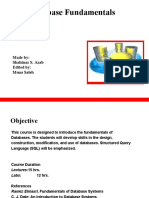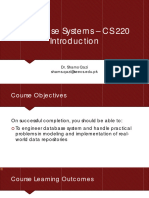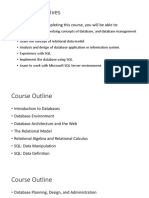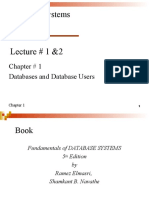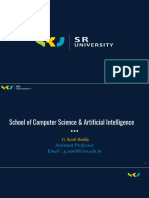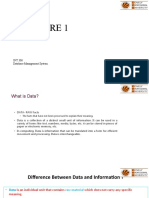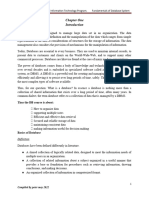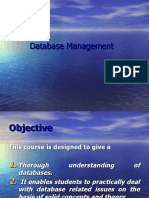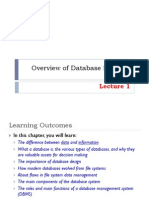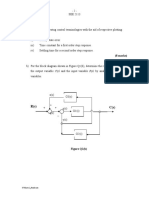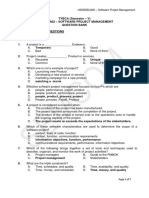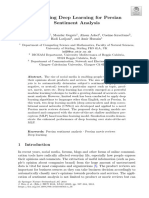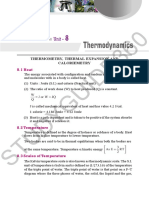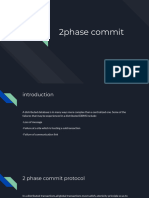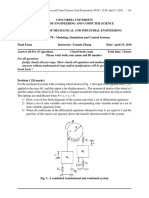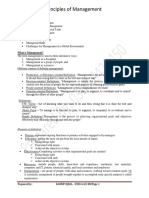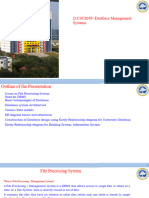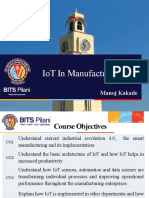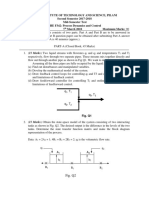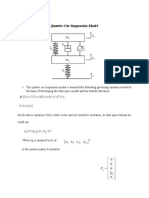0% found this document useful (0 votes)
21 views50 pagesIntroduction
The document provides an overview of database fundamentals and design. It discusses key concepts like data and information, file-based systems versus databases, database management systems (DBMS), database properties, users, and data models. The course aims to teach database fundamentals and design. Students will learn skills in designing, constructing, modifying, and using databases with a focus on Structured Query Language (SQL). The course runs for 30 hours over 18 lectures and 12 labs. Students will be graded based on assignments, lab work, and a final exam.
Uploaded by
kasemsaad756Copyright
© © All Rights Reserved
We take content rights seriously. If you suspect this is your content, claim it here.
Available Formats
Download as PDF, TXT or read online on Scribd
0% found this document useful (0 votes)
21 views50 pagesIntroduction
The document provides an overview of database fundamentals and design. It discusses key concepts like data and information, file-based systems versus databases, database management systems (DBMS), database properties, users, and data models. The course aims to teach database fundamentals and design. Students will learn skills in designing, constructing, modifying, and using databases with a focus on Structured Query Language (SQL). The course runs for 30 hours over 18 lectures and 12 labs. Students will be graded based on assignments, lab work, and a final exam.
Uploaded by
kasemsaad756Copyright
© © All Rights Reserved
We take content rights seriously. If you suspect this is your content, claim it here.
Available Formats
Download as PDF, TXT or read online on Scribd
/ 50

